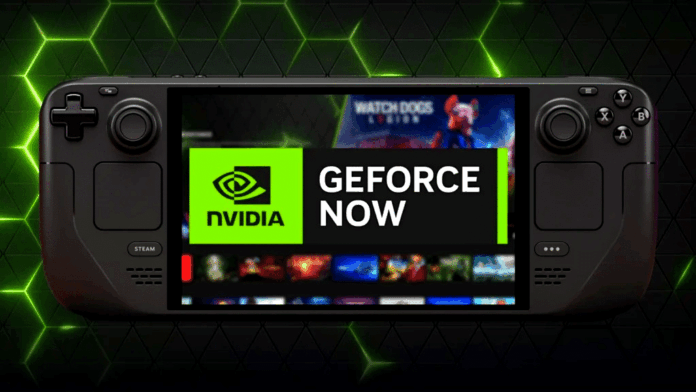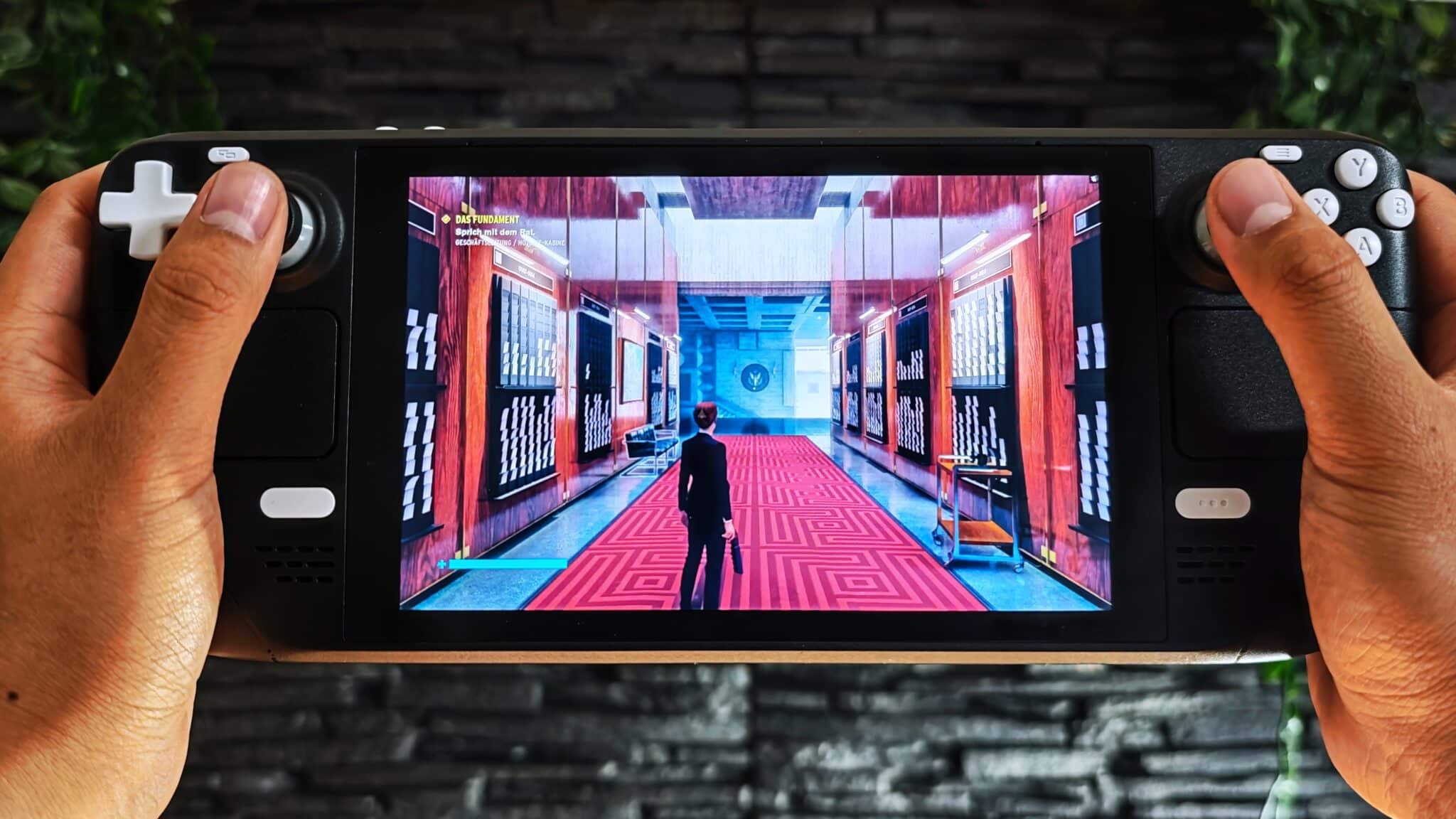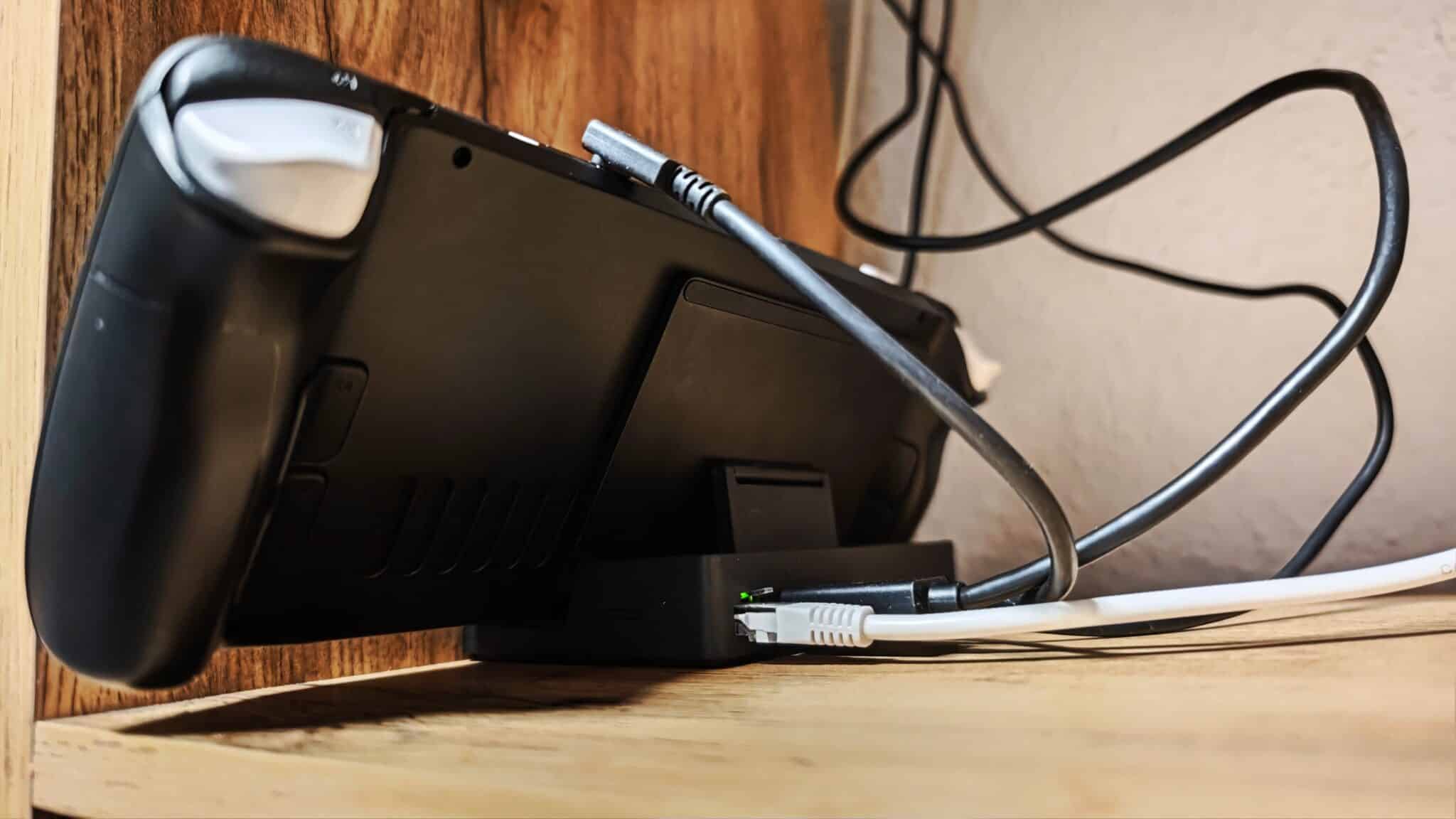The native GeForce Now app for Steam Deck is now available, and I tried it out for you for a week.
Ray tracing, 4K, ultra settings, and Steam Deck just can’t be mentioned in the same sentence without the word “not” – or can they?
The key is “cloud gaming.” At CES 2025, Nvidia announced that a native app for GeForce Now will be coming to Steam Deck. I’ve been using this app for about a week now to play games on my Steam Deck that are actually much too slow for the handheld. Impressive!
But how could it be otherwise: there are catches. Catches that were predictable.
Transparency note: Nvidia provided me with a pre-release version of the GeForce Now app free of charge for testing purposes. The company also temporarily upgraded my user account to the “Ultimate” subscription model. Nvidia had no influence on this article and there was no obligation to publish it.
Hardware used:
- Steam Deck LCD model
- Razer Handheld Dock Chroma
- Horipad Steam Controller
- Fritz!Box 6660 with 1 Gbit/s connection
What is GeForce Now anyway?
GeForce Now is a cloud gaming service from Nvidia. Unlike traditional gaming methods, where games run directly on your PC or console, GeForce Now runs games on powerful external servers from Nvidia. Your keyboard, mouse, or controller inputs are sent to these servers, which then run the game and send the video image back to your screen in real time.
An important difference from other gaming subscriptions is that GeForce Now does not offer you access to a complete game library for a monthly fee, as is the case with Game Pass, for example.
Instead, you can play games you’ve already purchased on platforms such as Steam or the Epic Games Store via the cloud. However, there are more than 140 free-to-play titles available.
Please note, however, that not all purchased games are compatible with GeForce Now. The service currently supports over 2,000 games, but you should check to see if your favorite titles are included before signing up.
You can choose between three membership plans.
– Not all games available
– Longest waiting times
– Only one hour per gaming session
– 1440p resolution
– Ray tracing
– Short waiting times
– 6 hours per gaming session
– 4K resolution
– Ray tracing
– Up to 240 FPS
– Shortest queues
– 8 hours per gaming session
– Nvidia DLSS3, Reflex, Cloud Gsync
All memberships have a maximum play time of 100 hours per month. That may sound like a lot, but it can quickly run out if you play big RPGs like Monster Hunter: Wilds or Dragon Age: The Veilguard . If you want to continue playing, you’ll be charged €7 for every 15 additional hours.
GeForce Now on Steam Deck
The app’s user interface is simple and uncluttered. When I first launched the app, I connected my Steam account to the service. Then I can find all my GeForce Now-compatible Steam games in the app and launch them from there.
Now let’s get to the most important point: How does it play?
Table of Contents
GeForce Now in handheld mode
How long does it take to start the games? It usually only takes a few seconds to jump from the GeForce Now app’s main menu to a game. Keep in mind, though, that I benefit from the shortest wait times thanks to my Ultimate membership.
According to reports from other members, the wait time with the Performance subscription can easily be one to two minutes. With the free subscription, I’ve heard reports of hour-long queues.
What you can’t avoid even with the Ultimate membership: Some games have to reload the shaders every time you start them. That adds a few more seconds.
Still, it’s a huge time saver that I don’t have to download so many games from my Steam library and can just start them.
Input lag: I was surprised at how low the input lag is in cloud gaming these days. With some titles, I completely forgot that the game wasn’t running natively on the Steam Deck. In my tests, I measured input lag of around 100 to 116 milliseconds.
If you actively pay attention to it, the latency is noticeable. Otherwise, it’s easy to forget about it. I’ve played on TVs that didn’t have a gaming mode, where the input lag was significantly worse.
Nevertheless, I wouldn’t want to play every genre via cloud gaming. In fighting games such as Street Fighter 6 or Tekken 8, a latency of 100 milliseconds is crucial for victory or defeat. I noticed the delay very strongly in these games.
For serious competitive gaming that requires quick reactions, I can’t recommend GeForce Now or other cloud gaming services.
Image quality: With the Ultimate subscription, you can select the highest graphics settings for most games. This is especially true for the Steam Deck, which has a rather low native resolution. The image quality is very high most of the time. This is really fun on the Steam Deck because such graphics settings are rather unusual on handhelds.
Power consumption: Because the game is not calculated on the native hardware, the battery life is significantly longer. However, the reduction in energy consumption is about 50 percent less than I thought. I guess that’s due to the video decoding. Still, 150 to 180 minutes for graphics-intensive games is quite positive.
The big immersion breaker
Unfortunately, while playing with the Steam Deck, I was quickly reminded that I was not playing on native hardware, but via an internet connection.
There are repeated short dropouts, during which either the sound is briefly lost or the image freezes. Then the video stream resynchronizes and it briefly looks as if the game is being fast-forwarded.
When the connection becomes unstable, the bitrate of the stream is also reduced, which drastically reduces the image quality.
Of course, there were also long periods of time that ran completely smoothly, but I couldn’t play without any dropouts. I found this strange, as I play with a fairly fast 1 Gbit per second connection.
I suspected that the problem might be with the Steam Deck’s Wi-Fi connection. So I connected the Steam Deck to a handheld dock to play via an Ethernet connection.
The LAN cable makes all the difference
Because my handheld dock is connected to the TV, I can play GeForce Now games in 4K resolution. The image quality completely won me over. It’s hard to believe that I’m playing on a Steam Deck – more or less.
Due to the high resolution, I assumed that the instability issues would occur even more frequently, but fortunately I was wrong.
When playing with the Ethernet cable connected , I never experienced the aforementioned dropouts or instability issues. At least not during my week of testing. The games ran smoothly and looked great.
If it weren’t for the input lag of about 100 milliseconds, you could easily forget that you’re playing via the cloud.
That was impressive – but also a shame. A shame because I prefer to hold the Steam Deck in my hands when gaming. However, your experience with a Steam Deck OLED may be better than mine, as the Steam Deck LCD only supports Wi-Fi 5. The OLED model, on the other hand, is equipped with Wi-Fi 6E.
My conclusion: GeForce Now is a game changer – but only under optimal conditions
- Very high image quality
- Low input lag
- Enables high-end gaming on the Steam Deck
- No game installation necessary
- Long battery life when gaming
- Not suitable for competitive gaming
- Wi-Fi connection can lead to instability
- Monthly 100-hour limit
It’s not easy to say whether cloud gaming on the Steam Deck is right for you. For the smoothest possible gaming experience, you’ll definitely need a fast internet connection. Nvidia recommends at least 45 Mbps for 4K gaming at 120 FPS.
If your Steam Deck isn’t powerful enough and you don’t own a console or gaming PC, GeForce Now could be a suitable alternative for playing games that would be too slow for the handheld. Check whether the titles you want to play are included in the GeForce Now catalog and whether 100 hours per month is enough for you.
Also keep in mind that your gaming experience may differ greatly from mine or from others. For example, you may not experience any problems with cloud gaming over Wi-Fi because you have less interference than I do.
If you’re interested in GeForce Now on Steam Deck, just try it out for a month and see if the service works well for you. If possible, I recommend using a handheld dock connected to your router with an Ethernet cable.




